Disaster Response Revolution: Temporary Container Buildings Deployed in 72 Hours via Lida Group’s Prefab Container Construction Systems
2025-Jul-29 17:13:58
By Admin
1. Introduction
In the face of natural disasters such as earthquakes, hurricanes, floods, and wildfires, the immediate need for safe, habitable shelters for the affected population is of utmost importance. Traditional methods of constructing temporary shelters often prove to be time – consuming, resource – intensive, and may not be able to meet the urgent needs of disaster – stricken areas. However, a revolutionary solution has emerged in the form of temporary container buildings deployed rapidly through prefab container construction systems, with Lida Group at the forefront of this innovation.
Lida Group, a renowned company with over 32 years of experience in the field of modular and prefab construction, has developed advanced prefab container construction systems that can deploy temporary container buildings within 72 hours. This not only significantly reduces the time gap between a disaster’s occurrence and the provision of shelter but also offers a host of other advantages in terms of cost – effectiveness, durability, and adaptability.
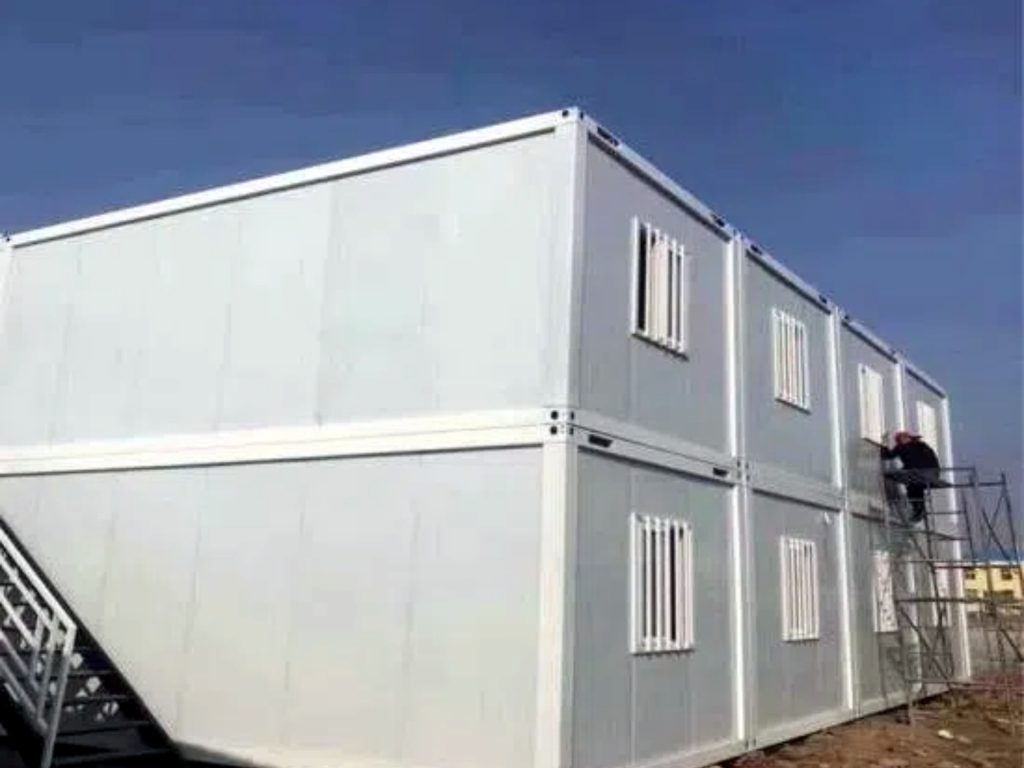
2. The Urgency of Disaster Response
2.1 The Impact of Natural Disasters on Shelter Needs
Natural disasters can strike with little or no warning, leaving behind a trail of destruction. For example, earthquakes can level entire neighborhoods, as seen in the 2011 Tohoku earthquake in Japan, which affected over 450,000 buildings. Hurricanes, like Hurricane Katrina in 2005, can flood vast areas, displacing thousands of residents. In the aftermath of such disasters, the displaced population urgently requires safe and secure shelters. Exposure to the elements, lack of proper housing, and the spread of diseases due to overcrowding in makeshift shelters are some of the immediate problems that need to be addressed.
2.2 Limitations of Traditional Shelter Construction Methods
Traditional methods of constructing temporary shelters involve on – site construction, which requires a large amount of time for material procurement, site preparation, and actual building. Skilled labor is also in high demand, and in disaster – stricken areas, these resources may be scarce or difficult to mobilize. Additionally, the quality of these shelters may vary depending on the expertise of the local workforce and the availability of materials. For instance, building simple tents or using tarpaulins as shelters may provide only minimal protection against the elements and do not offer long – term solutions. Permanent or semi – permanent structures built using traditional construction techniques may take weeks or even months to complete, which is far too long for those in immediate need.
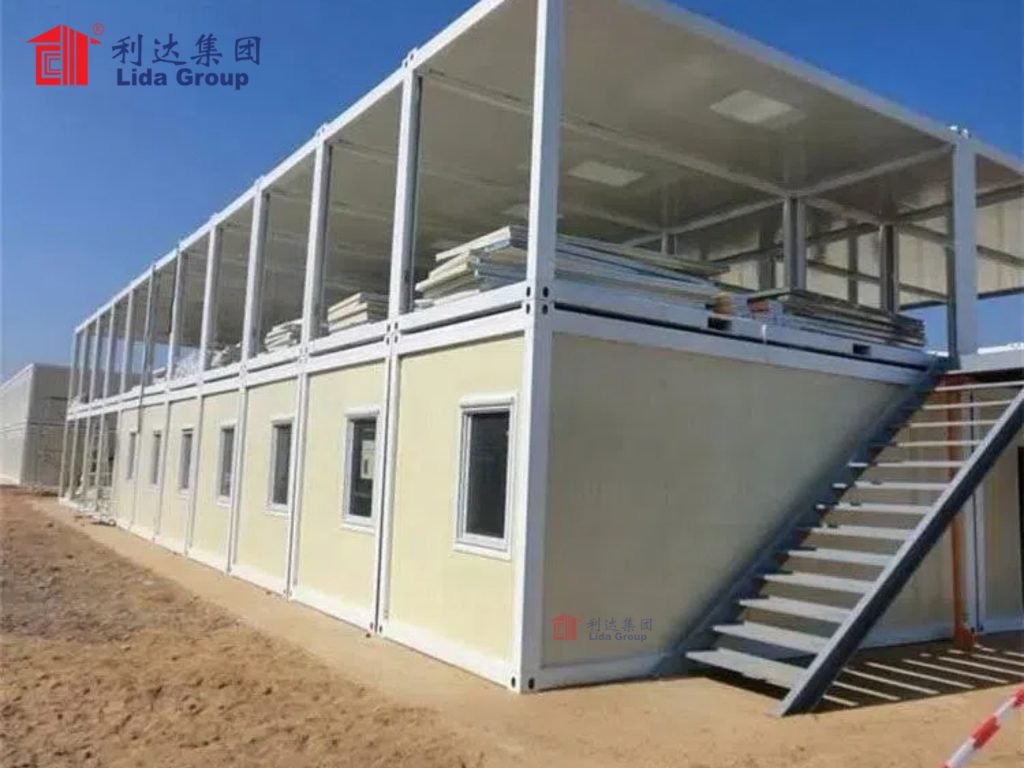
3. Lida Group’s Prefab Container Construction Systems
3.1 Overview of the Systems
Lida Group’s prefab container construction systems are based on the use of standardized shipping containers or specially designed modular container units. These units are prefabricated in a factory – controlled environment, ensuring high – quality construction. The company offers two main types of container houses: the flat – pack container house and the welding/shipping container house.
3.1.1 Flat – Pack Container House
The flat – pack container house from Lida Group is an innovative solution that is ideally suited for various applications, especially in disaster – response scenarios. It is made of natural materials and is almost 100% recyclable, presenting an environmentally friendly option. The structure consists of three modular parts: the roofing frame, corner column, and floor frame. Each modular part is manufactured at the factory and can be easily assembled on – site with minimal tools. This type of container house can be shipped either assembled or in a flat – packed form to minimize transport costs. It can be disassembled after use and transferred to a new location, offering great flexibility.
3.1.2 Welding/Shipping Container House
The welding/shipping container house, on the other hand, is more robust and is widely used in different settings. It has a lot of options for outside color and inside decoration, allowing for customization. Everything is fixed in the factory, and it can be used directly after arrival at the destination. These container houses are designed to withstand harsh weather conditions and are suitable for long – term use as well.
3.2 Key Features and Advantages
3.2.1 Rapid Deployment
One of the most significant advantages of Lida Group’s prefab container construction systems is the ability to achieve rapid deployment. The prefabricated nature of the container units means that they can be quickly transported to the disaster – stricken area. Once on – site, they can be assembled within a short period. In many cases, with a well – organized team, these container buildings can be made ready for occupation within 72 hours. This is a stark contrast to traditional construction methods that may take weeks or months to complete similar structures.
3.2.2 Cost – Effectiveness
Cost is a major consideration in disaster – response efforts. Lida Group’s systems offer cost – effectiveness in several ways. Firstly, the factory – based prefabrication process reduces labor costs associated with on – site construction. Secondly, the use of standardized container units and modular components allows for bulk production, which in turn reduces material costs. Additionally, the quick deployment means that the overall cost of providing shelter over a shorter time frame is significantly reduced. For example, compared to building traditional temporary shelters from scratch, the use of prefab container buildings can save up to 30 – 40% in costs.
3.2.3 Durability
The container buildings are designed to be highly durable. They are constructed using high – quality steel and other materials that can withstand harsh environmental conditions. For instance, they can stand up to strong winds of up to 100 km per hour, making them suitable for areas prone to hurricanes or typhoons. The units are also rust – resistant, ensuring a long lifespan even in humid or coastal environments. This durability is crucial as it provides a safe and reliable shelter for the displaced population over an extended period.
3.2.4 Adaptability and Customization
Lida Group’s container buildings can be easily adapted to different needs and site conditions. They can be configured in various ways, such as being stacked in multiple storeys or combined horizontally to create larger living or working spaces. Inside, they can be customized to include different facilities such as bedrooms, bathrooms, kitchens, and living areas. For disaster – response purposes, this adaptability means that the container buildings can be quickly modified to meet the specific needs of the affected population, whether it’s setting up medical facilities, emergency response centers, or temporary housing.
3.2.5 Environmental Friendliness
The use of recyclable materials in the construction of the container houses, especially in the case of the flat – pack container houses, makes them an environmentally friendly option. The modular design also reduces waste as the components are pre – fabricated to precise specifications. In disaster – response situations, where minimizing the environmental impact of relief efforts is becoming increasingly important, these container buildings offer a sustainable solution.
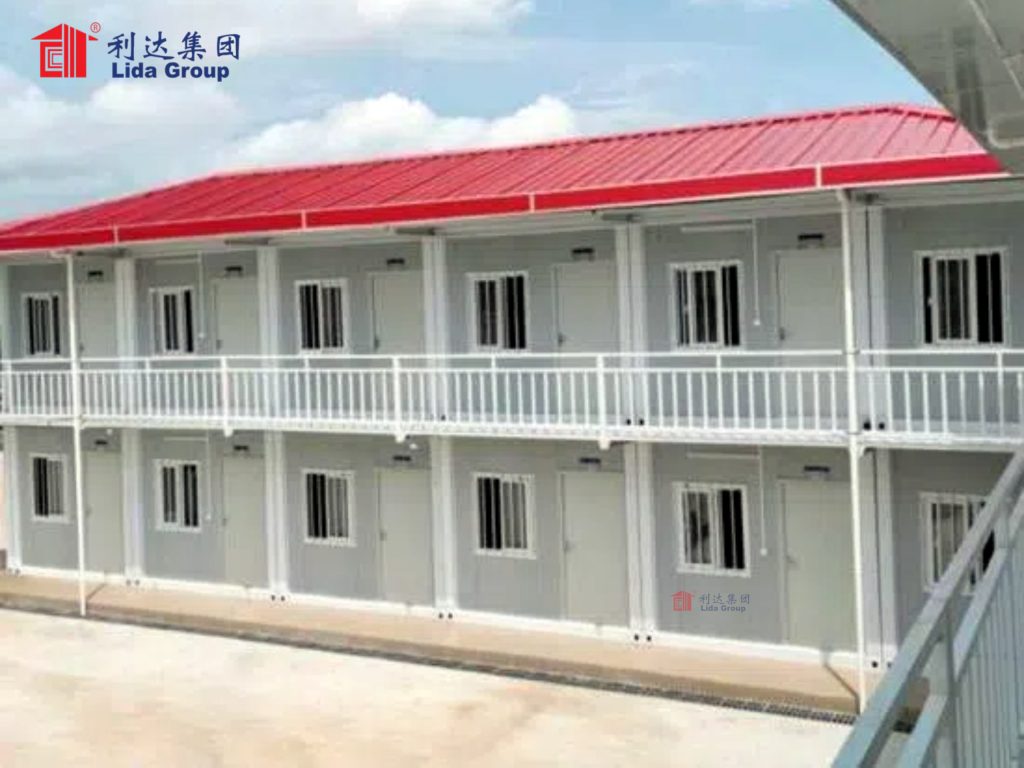
4. Deployment Process within 72 Hours
4.1 Pre – Disaster Preparedness and Planning
4.1.1 Inventory Management
Lida Group maintains a well – stocked inventory of prefab container units and related components. This inventory is strategically located in different regions to ensure quick access in case of a disaster. The company regularly updates and audits its inventory to ensure that all units are in good condition and ready for deployment. For example, they keep a certain number of flat – pack container houses and welding/shipping container houses in stock at their warehouses in key locations around the world.
4.1.2 Logistics and Transportation Planning
In collaboration with reliable logistics partners, Lida Group has developed detailed transportation plans. They have identified the most efficient routes to disaster – stricken areas and have pre – arranged transportation vehicles such as trucks, trains, and ships. In the event of a disaster, the logistics team can quickly mobilize these resources to transport the container units to the site. They also have contingency plans in place in case of disruptions to the normal transportation routes, such as road closures due to floods or damaged bridges.
4.2 Immediate Response after a Disaster
4.2.1 Assessment of the Situation
As soon as a disaster is reported, Lida Group’s response team works closely with local authorities, relief organizations, and international agencies to assess the scale of the disaster and the shelter needs of the affected population. This involves gathering information about the number of displaced people, the location of the affected areas, and the local infrastructure conditions. Based on this assessment, they determine the type and number of container buildings required.
4.2.2 Mobilization of Resources
Once the assessment is complete, the company immediately mobilizes its resources. This includes dispatching the prefab container units from the nearest inventory location, assembling a team of skilled workers for on – site installation, and arranging for the necessary tools and equipment. The team is trained to work under pressure and in challenging conditions to ensure a smooth deployment process.
4.3 On – Site Installation and Setup
4.3.1 Site Preparation
Upon arrival at the disaster – stricken area, the first step is site preparation. This may involve clearing debris, leveling the ground, and ensuring proper drainage. Local labor may be hired to assist with these tasks, which not only speeds up the process but also provides employment opportunities for the local community.
4.3.2 Assembly of Container Buildings
The skilled installation team then begins the assembly of the container buildings. For flat – pack container houses, the modular parts are quickly assembled following the pre – designed plans. The welding/shipping container houses are also positioned and connected as required. The team ensures that all connections are secure and that the buildings are stable.
4.3.3 Installation of Utilities and Amenities
After the basic structure is in place, the installation of utilities such as electricity, water, and sanitation systems begins. Lida Group’s container buildings are designed to be easily connected to local utility grids or can be equipped with independent power generation systems such as generators. Plumbing systems are installed to provide clean water and proper waste disposal. Amenities such as furniture, lighting, and heating or cooling systems are also installed to make the shelters habitable.
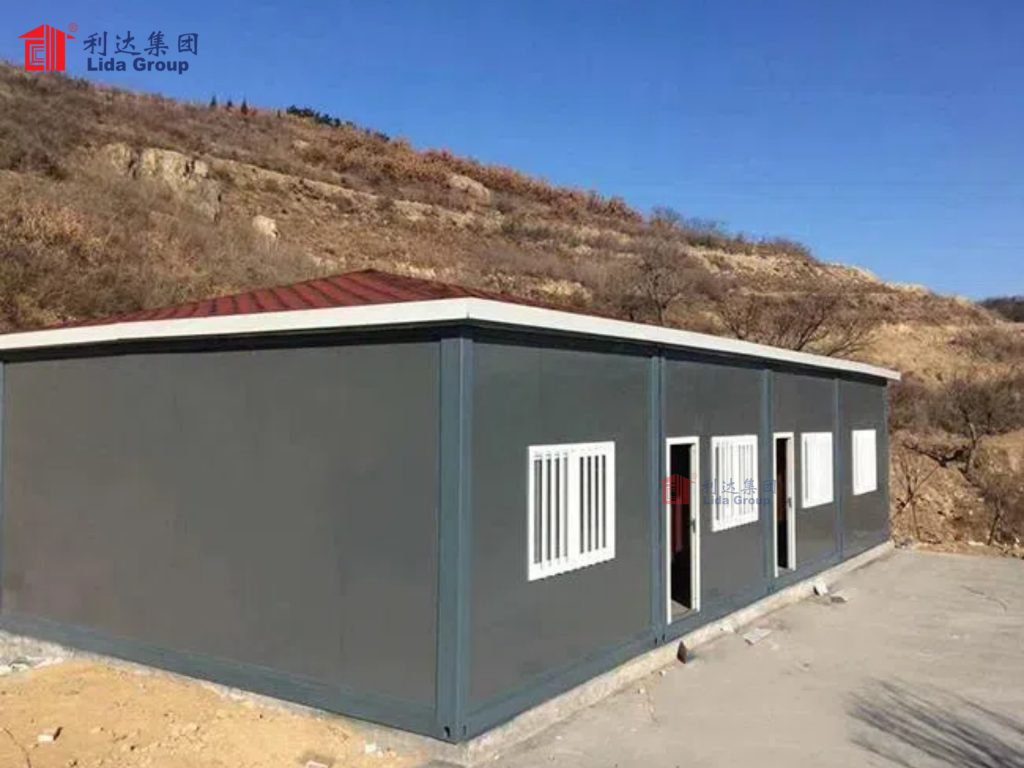
5. Case Studies of Successful Deployments
5.1 Earthquake – Stricken Region A
In a recent earthquake in Region A, Lida Group was called upon to provide emergency shelter. Within 72 hours of the earthquake, the first batch of container buildings was on – site. The company deployed a combination of flat – pack and welding/shipping container houses. The flat – pack container houses were used to create temporary housing units for the displaced families, while the welding/shipping container houses were converted into emergency medical facilities and relief distribution centers. The container buildings were equipped with basic amenities such as beds, cooking facilities, and toilets. The quick deployment of these shelters provided a safe haven for the affected population, protecting them from the elements and helping to prevent the spread of diseases.
5.2 Hurricane – Hit Region B
When Hurricane B hit Region B, Lida Group’s prefab container construction systems were again put to the test. The company worked in tandem with local disaster management agencies to deploy container buildings as temporary shelters. The container units were designed to withstand the high winds associated with the hurricane. They were quickly transported to the affected areas, and the installation team worked around the clock to set them up. In addition to housing, the container buildings were also used to establish communication centers, allowing the affected population to stay in touch with their loved ones and receive important information about relief efforts.
6. Comparison with Other Disaster – Response Shelter Solutions
6.1 Comparison with Traditional Tents
6.1.1 Durability and Protection
Traditional tents offer only minimal protection against the elements. They are prone to damage from strong winds, rain, and extreme temperatures. In contrast, Lida Group’s container buildings are made of sturdy materials and can provide better protection against harsh weather conditions. For example, a container building can withstand hurricane – force winds, while a tent may be easily blown away.
6.1.2 Comfort and Amenities
Container buildings can be equipped with a wide range of amenities such as proper flooring, insulation, and ventilation systems, providing a more comfortable living environment. Tents, on the other hand, often lack these features and may not be suitable for long – term use. The ability to install furniture, electricity, and plumbing in container buildings makes them a more attractive option for disaster – affected individuals.
6.2 Comparison with Permanent – Style Temporary Buildings
6.2.1 Speed of Construction
Permanent – style temporary buildings, although more durable in the long run, take a significantly longer time to construct. The on – site construction process involves multiple stages, from foundation laying to finishing work. Lida Group’s prefab container buildings, with their factory – prefabricated components, can be erected in a fraction of the time, making them more suitable for immediate disaster – response needs.
6.2.2 Cost – Effectiveness
The cost of constructing permanent – style temporary buildings is often much higher due to the extensive on – site labor and material requirements. Prefab container buildings offer cost savings through factory – based production, standardized components, and quick installation, making them a more cost – effective solution for disaster – response shelters.
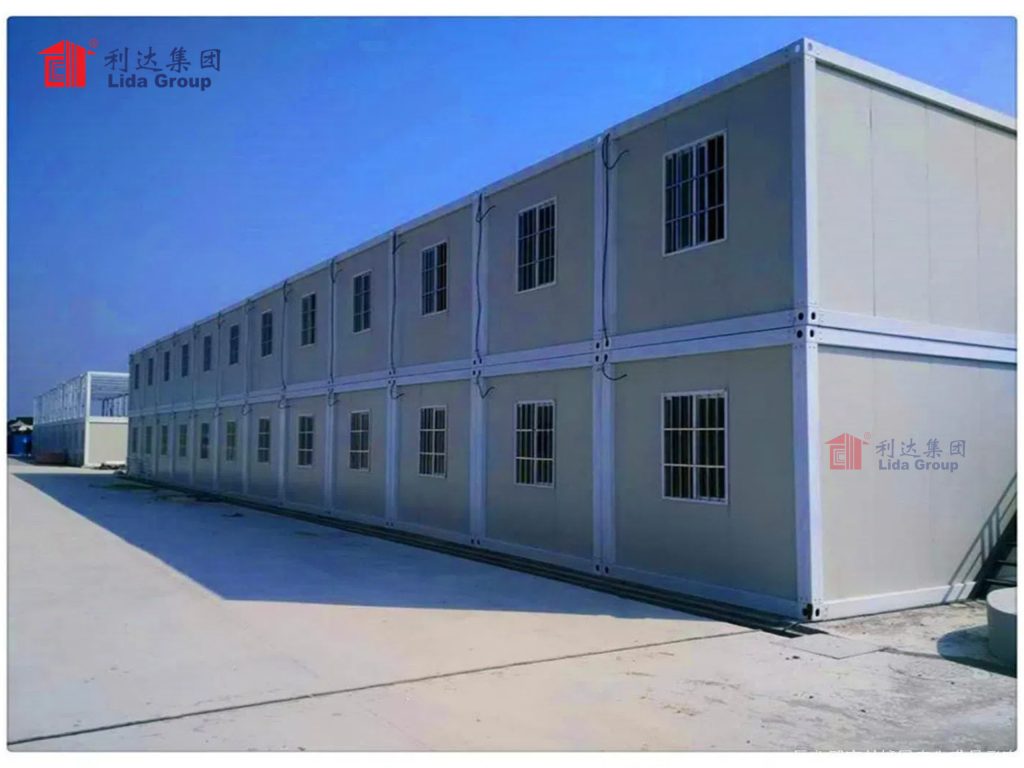
7. The Role of Lida Group in Global Disaster Response
7.1 Collaborations with International Relief Agencies
Lida Group has established strong partnerships with international relief agencies such as the United Nations High Commissioner for Refugees (UNHCR), the International Federation of Red Cross and Red Crescent Societies, and various non – governmental organizations (NGOs). These collaborations have enabled the company to participate in disaster – response efforts around the world. For example, in the case of a major refugee crisis in a particular region, Lida Group worked with UNHCR to provide prefab container shelters for the displaced population. The company’s ability to rapidly deploy high – quality shelters was highly valued by these agencies.
7.2 Contribution to Sustainable Disaster Recovery
By providing durable, adaptable, and environmentally friendly shelter solutions, Lida Group is not only helping to meet the immediate needs of disaster – affected communities but also contributing to their long – term recovery. The container buildings can be used as a starting point for the reconstruction process, either as temporary housing during the rebuilding phase or as permanent structures in some cases. Their recyclable materials and energy – efficient designs also support sustainable development goals in disaster – affected areas.
8. Future Developments and Innovations
8.1 Technological Advancements in Container Construction
Lida Group is constantly researching and developing new technologies to improve its prefab container construction systems. This includes the use of advanced materials that are even more lightweight, yet stronger and more durable. For example, they are exploring the use of composite materials in container construction, which could further enhance the performance of the buildings while reducing transportation costs. In addition, the company is looking into integrating smart technologies into the container buildings, such as energy – monitoring systems and remote – controlled access, to improve the functionality and safety of the shelters.
8.2 Expansion of Services and Global Reach
The company plans to expand its services and global reach in the coming years. This includes opening more production facilities and distribution centers in strategic locations around the world to further reduce the time taken for deployment. They also aim to offer more comprehensive disaster – response solutions, including not only shelter but also services such as water purification systems, waste management solutions, and communication infrastructure.
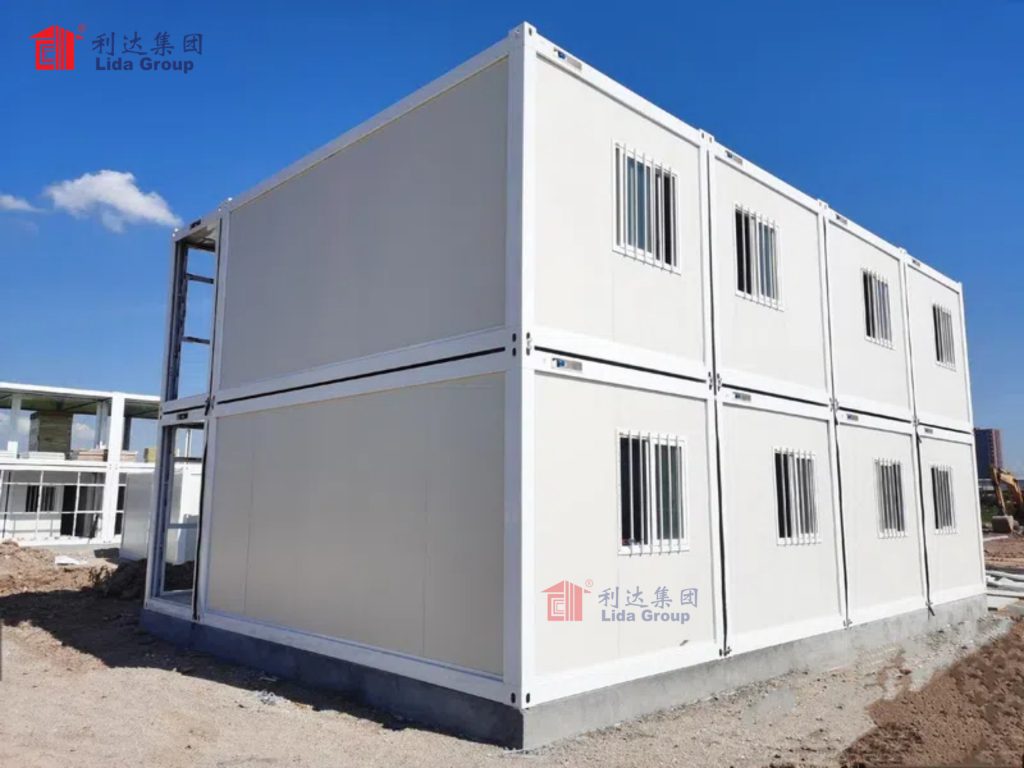
9. Conclusion
Lida Group’s prefab container construction systems have revolutionized the disaster – response landscape by enabling the rapid deployment of temporary container buildings within 72 hours. The company’s innovative approach, with its focus on rapid deployment, cost – effectiveness, durability, adaptability, and environmental friendliness, has proven to be highly effective in providing immediate shelter for disaster – affected populations. Through successful case studies in various disaster – stricken regions and collaborations with international relief agencies, Lida Group has demonstrated its ability to make a significant impact in global disaster response.
Looking to the future, with continued technological advancements and an expansion of services and global reach, Lida Group is well – positioned to play an even more crucial role in disaster – response efforts. Their commitment to providing sustainable and high – quality shelter solutions will not only help save lives in the immediate aftermath of disasters but also contribute to the long – term recovery and resilience of affected communities. As natural disasters continue to pose a threat around the world, the importance of such innovative and efficient disaster – response solutions cannot be overstated.
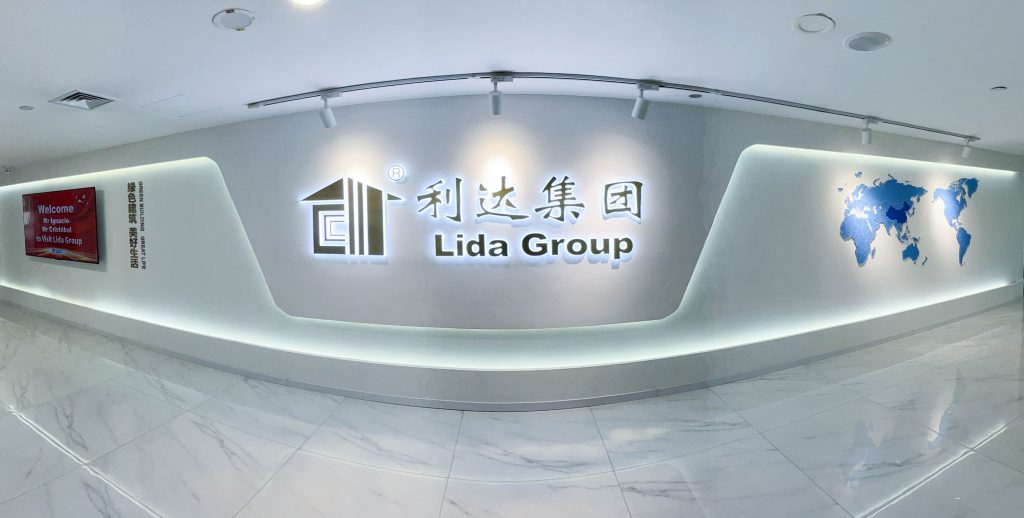
Related news
-
Lida Group Advances Steel Structure Construction with BIM-Driven Designs for High-Quality Steel Warehouse & Farm House Projects
2025-07-29 16:09:05
-
Global Supply Chain Upgrade: Lida Group Delivers Rapid Steel Frame Building Solutions for Critical Warehousing Needs
2025-07-29 15:43:39
-
Why Agricultural Sectors Prefer Lida Group's High-Quality Steel Farm Houses Using Advanced Steel Structure Construction
2025-07-29 15:09:28
contact us
- Tel: +86-532-88966982
- Whatsapp: +86-13793209022
- E-mail: sales@lidajituan.com


